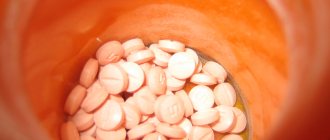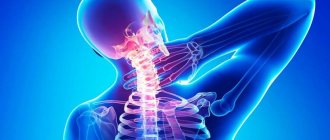Lipodystrophy is a change in subcutaneous fat tissue at the sites of insulin in the form of its atrophy (atrophic form) or hypertrophy (hypertrophic form). Insulin therapy in patients with diabetes mellitus can cause both lipoatrophy and lipohypertrophy, which can exist simultaneously in the same patient. According to the international study TITAN, published in 2010, which involved 16 countries, including Russia, lipodystrophy was detected in 48% of patients. In the Russian Federation this figure was 44.6%. One of the possible reasons for the development of lipodystrophy is the repeated use of disposable needles for insulin injections, another is chronic trauma to the subcutaneous tissue with a “blunt” needle, leading to the development of chronic inflammation and the formation of foci of lipodystrophy. Another European epidemiological study on insulin injection technique showed that the risk of lipodystrophy increases by 31% diabetic Unfortunately, the results of a quantitative GFK study performed in 2006 in the Russian Federation showed that 46% of patients in our country replace disposable needles only once a week! Most often, lipodystrophy develops in patients with type 1 diabetes , women and obese patients.
Lipoatrophy manifests itself as a rounded, indented area of skin at the sites of insulin administration, appearing 6 to 24 months after the start of insulin therapy (Fig. 1 Example of lipoatrophy in the abdominal area).
rice. 1 Example of lipoatrophy in the abdominal area
rice. 2 Example of lipohypertrophy in the abdominal area
Lipodystrophy in diabetes mellitus
Diabetic lipodystrophy is one of the complications of diabetes mellitus.
The longer the duration of diabetes, the stronger the manifestations of lipodystrophy. Lipodystrophy manifests itself in the form of a violation of the development of adipose tissue at the sites of insulin administration.
The reasons for the development of lipodystrophy in diabetes mellitus is the incorrect administration of insulin, which leads to disruption of the development of adipose tissue.
Reasons for the development of lipodystrophy in diabetes mellitus:
- Injecting insulin into the same place for a long time;
- Administration of cold insulin – insulin for injection should be at room temperature;
- Injecting insulin too deeply - insulin should be injected under the skin, not into muscles or fat tissue.
Symptoms
Local moderate lipodystrophy is not life-threatening, it is only a cosmetic defect. However, for many women it causes a lot of discomfort and causes stress and depression.
The absence of fat in different parts of the body, where insulin injections were not even administered, is a serious reason to seek help from a doctor. Adipose tissue atrophies, and in diseased areas the condition of the vascular system worsens. Insulin in such areas is poorly absorbed. Due to lack of perception of the hormone, the disease cannot be compensated for. Calculating doses of insulin drugs becomes more difficult.
Adipose tissue sometimes hypertrophies after injections. This effect also weakens the effect of insulin drugs. Wen is a serious cosmetic defect.
Lipodystrophy can also develop under the influence of a hereditary factor. Metabolic disorders are quite often transmitted from parents to children.
Manifestations of lipodystrophy are divided into two types - partial and total forms. The total form of the pathology is accompanied by a strong decrease in subcutaneous fatty tissue in many parts of the body. During the partial form, the signs are the same, but the fat layer of the face is not affected.
Types of lipodystrophy
In diabetes mellitus, there are two types of lipodystrophy:
- Atrophy of adipose tissue;
- Hypertrophy of adipose tissue.
Atrophy occurs most often - in 80% of cases. And only 20% is due to hypertrophy.
Atrophy is the underdevelopment of adipose tissue at the sites of insulin administration. Atrophy does not affect other areas of the body and does not spread anywhere.
In fact, it looks as if there is a complete absence of adipose tissue at the injection site; in these places there are hollows that are very clearly visible.
For many, this is a significant physical disability.
Hypertrophy, on the contrary, is expressed in the growth of adipose tissue. Areas affected by hypertrophy look like uneven fat mounds.
At first, the fat deposits are not very large, but over time they increase. Hypertrophy also appears only at the sites where insulin is administered, without affecting other areas of the body.
Most often, atrophy, like hypertrophy, develops on the abdomen. Since these places are most convenient for insulin injections and are often the main places for insulin administration.
Diarrhea
How often: Occurs very often. Diarrhea is believed to be one of the most common reasons why people living with HIV stop treatment or change their treatment regimen.
Treatment: Use of antidiarrheals that slow down intestinal motility. These include Imodium (loperamide), Lomotil (diphenoxylate and atropine). These drugs should be used only as prescribed by a doctor, since their uncontrolled use can pose a threat to life and health.
Mytesi is the only drug for the relief of diarrhea in people living with HIV and the second herbal drug to be approved by the FDA. It is obtained from the sap of the Croton lechleri plant.
In some situations, ART adjustment is required.
What are the risks of developing lipodystrophy?
Lipodystrophy is a very unpleasant disorder. This complication is not fatal, but it carries certain inconveniences that must be taken into account in the further treatment of diabetes mellitus.
- Atrophy and hypertrophy lead to impaired absorption of insulin, which leads to surges in sugar and the inability to clearly select the required doses of insulin;
- Atrophy can lead to the development of insulin resistance, which will lead to more complex problems;
- Hypertrophy can lead to the appearance of coffee ulcers and the development of skin infections, which are difficult to treat in diabetes mellitus and can lead to disastrous consequences;
- Lipodystrophy is also an external defect, which also affects lifestyle.
Diseases of the cardiovascular system
How often: It is the second leading cause of death among people living with HIV.
Treatment: A comprehensive approach is required, which includes various types of treatment. There are drugs that lower cholesterol levels, such as Crestor (rosuvastatin) and others. Programs that help you quit smoking, lose weight, and exercise are helpful. It is necessary to reduce the consumption of alcohol and salt. If your blood pressure is not at normal levels, your doctor will help prescribe the necessary medications. Options include: ACE inhibitors, angiotensin II receptor blockers, beta blockers, calcium channel blockers.
Prevention of lipodystrophy
Lipodystrophy is a disease that is difficult to cure completely, if not impossible. But you can prevent its development.
To prevent lipodystrophy from making itself felt, you need to follow some simple rules when administering insulin:
- Firstly, it is very important to change the injection site with each injection. You can create a schedule for changing injection sites by dividing insulin injection sites into small sections. The next injection of insulin should be 2-3 cm further from the previous one;
- Secondly, it is important to carry out the injection itself correctly - inject insulin subcutaneously, hold the needle at an angle, and, if necessary (in case of injecting insulin into the abdomen), make a small fold of skin;
- Thirdly, insulin should be at room temperature; do not administer insulin that has just been taken out of the refrigerator;
- Fourthly, change the needle on the syringe pen more often, do not allow the needle to become completely dull.
These simple rules will help you avoid very serious problems in the future.
Arterial hypertension
How often: Very often. For example, the US Department of Veterans Affairs reports that 45% of patients with HIV are diagnosed with hypertension. However, scientists are not entirely sure whether this may be due only to HIV infection or treatment with antiretroviral drugs, or a combination of these factors.
Treatment: Stop smoking, weight loss, salt restriction. Vasodilators (for example, hydralazine), antihypertensive drugs (see above), diuretics (hypothiazide, etc.) are used.
Translation by Evgeniy Ignatov
Subscribe to the AIDS.CENTER page on Facebook.
Treatment of lipodystrophy
There is no cure for lipodystrophy as such. There are only methods aimed at improving insulin absorption, improving blood supply to affected areas, and activating the formation of adipose tissue during atrophy.
Methods used to treat the consequences of lipodystrophy:
- Changing injection sites - do not inject insulin into the affected areas;
- Massage of the affected areas - blood supply improves and the resorption of fat mounds accelerates;
- Warming up fat mounds with paraffin;
- Electrophoresis;
- Ultrasound on affected areas;
- Hormone therapy for atrophy.
And it is important to remember that it is easier to prevent complications from developing than to try to get rid of the consequences later.
Mood changes, including depression and anxiety
How often: According to AIDS Beacon, 63% of HIV-positive participants in a recent study reported having either current or past symptoms of depression, 26% had suicidal ideation, and 13% of participants had attempted suicide. suicide.
Treatment: The most effective drugs that alleviate this condition are serotonin reuptake inhibitors. The US National Institutes of Health recommends the following medications to treat depression in patients with HIV: imipramine, desipramine, nortriptyline, amitriptyline, fluoxetine, sertraline, paroxetine, citalopram, escitalopram, fluvoxamine, venlafaxine, nefazodone, trazodone, bupropion, and mirtazapine.
How to prevent the condition from getting worse
Diabetes is an extremely dangerous disease if adequate measures are not taken to combat it. Any diabetic should adhere to the following rules while fighting their illness:
- elimination of all symptoms and complications of high sugar;
- regular glucose monitoring;
- fight against chronic pathologies in the body;
- relief and prevention of dystrophies that interfere with injections.
First of all, you need to eliminate all third-party diseases. In diabetes, any pathological lesion is more severe than in a healthy person. You should also adjust your diet by eliminating all fast carbohydrates, fatty and fried foods.
Lipodystrophy may appear several years after the start of replacement therapy. If all the rules of prevention have been followed, but the complication still makes itself felt, then you should try to use only long-acting insulin, maximizing the interval between injections. This will slightly improve the condition of fatty skin tissue.
Maintaining normal blood sugar levels is the main goal in diabetes treatment
You should regularly consult a specialist, especially if you need to somehow adjust the plan for combating the disease. The use of modern drugs and syringe pens for insulin allows us to avoid complications.
Alternating injection areas
Insulin injections are given in the stomach. To minimize harm to the fat layer, it is necessary to regularly alternate the areas of drug administration. Conventionally, the stomach can be divided into 4 squares. It is recommended to make each new injection 1 cm from the old one. The injection can also be carried out in the upper thigh and buttocks.
With proper planning and weekly rotation from one square to another, the subcutaneous tissue will have the opportunity to recover after injections. Thus, a collision with lipodystrophy will not occur even with extremely long-term treatment.
Scheme of possible use of a place for administering a drug for diabetes
To understand whether the area has recovered after the injection, you should carefully palpate it. If there are no compactions or visual changes, and more than 1 week has passed, then you can inject again in the same place.
Does excess weight affect lipodystrophy?
Too much body fat and excess weight negatively affect the general condition of the body. The likelihood of developing tissue hypertrophy also increases. It is recommended to try to follow a diet and set the dosage of the hormone so that the weight gradually decreases and is within the normal body mass index.
A diabetic diet should be balanced. The body must receive all the necessary micro- and macroelements. To prevent glucose from jumping too much, you need to exclude all sweets from your diet. Preference is given to complex carbohydrates, salads and steamed foods.
Important! The diet should be prepared in consultation with a qualified physician. Errors in nutrition lead to a deterioration in overall health and the progression of diseases along with its complications.







